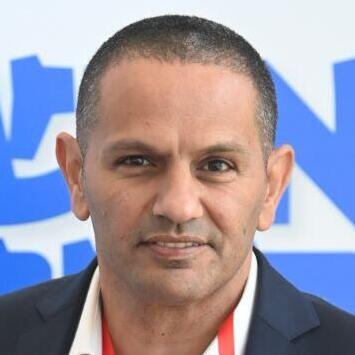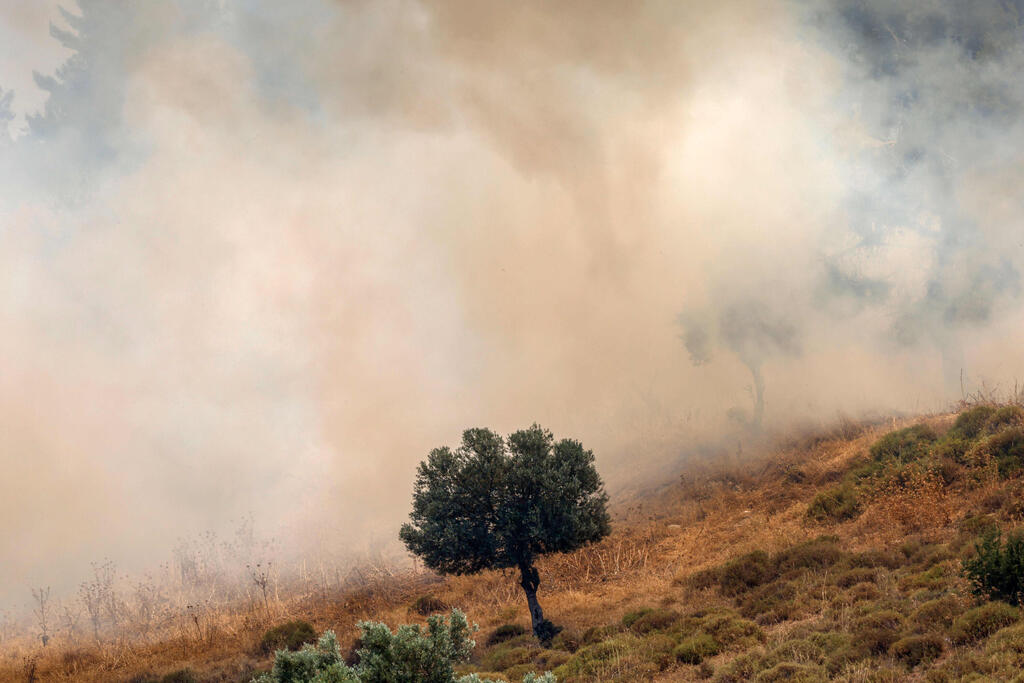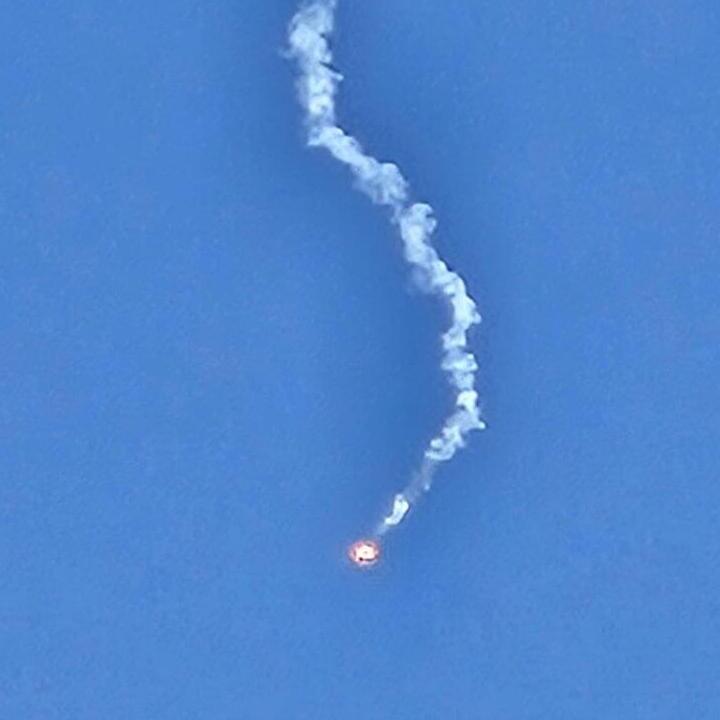Getting your Trinity Audio player ready...
In recent months, and particularly over the last weekend, Hezbollah has not only demonstrated the strength of the precision weaponry it has amassed since the 2006 Lebanon War, but also its calculated priorities in choosing targets in Israel: military objectives before civilian ones.
Reports from Lebanon indicate that alongside direct hits on several buildings in the Upper Galilee, following the assassination of a senior Hezbollah field commander, Hezbollah also targeted the Plasan plant in Kibbutz Sasa. The plant is known for manufacturing armor for IDF operational vehicles, as well as for foreign militaries. Hezbollah has periodically attempted to strike significant defense industries in the north, such as the David Institute in Kiryat Yam, part of Israeli defense giant Rafael, and other facilities producing weaponry throughout the Galilee.
5 View gallery


Brush fires in northern Israel's Upper Galilee region after Hezbollah rocket attack
(Photo: Jalaa MAREY / AFP)
Northern Israel is home to large manufacturing and development complexes that are part of the country’s defense industries. The location and size details of many of these facilities, including strategic ones like those of Elbit and Rafael, are well-known and publicly available online, making them relatively easy targets.
However, so far, there have been no reports of significant damage to these facilities, though successful interceptions of attempts to hit them have been reported. These plants are considered vital, and thus continue to operate even during the conflict.
In these northern facilities, various types of missiles for the Air Force and ground forces, smart bombs, reconnaissance and attack drones, and active defense systems (including the Trophy system for armored vehicles) are developed and produced. It can be assumed that Hezbollah aims its most significant weaponry, which it has accumulated over the last decade and has yet to use, at these facilities: hundreds of precision missiles with warheads capable of carrying up to a metric ton of explosives.
5 View gallery


Hezbollah rocket fragments found near Kadita, northern Israel
(Photo: Anise Samarano)
According to IDF estimates, Hezbollah also possesses Russian Yakhont cruise missiles, primarily intended for targeting coastal or maritime assets such as Israeli gas platforms and the Haifa naval base. The Yakhont is effective over a range of several hundred kilometers, capable of reaching as far as the Ashdod port and the nearby naval base. Over the past decade, foreign media have reported several instances of the IDF targeting Yakhont stockpiles in Lebanon and Syria.
The IDF is preparing for the threat of precise and heavy missiles, as well as swarms of kamikaze drones—each attack potentially involving dozens of drones (a tactic Hezbollah has yet to deploy). These drones carry a relatively small payload, limiting their overall damage. Additionally, they are more effective at close ranges near the border, similar to the incident in Hurfeish where IDF soldiers were wounded, and one was killed.
The longer the drones fly, the greater the chances of detecting and intercepting them, as has happened several times off the coast of Israel and in the skies over Haifa, Acre and Nahariya. In early April, Iran launched a large number of drones from a range of thousands of kilometers, most of which were intercepted far from Israel.
The IDF aims to maintain the operation of factories and bases even in scenarios where Hezbollah launches a swarm of drones at Israel, to preserve functional continuity. This also applies to Air Force bases preparing for potential attacks, especially air defense installations such as Iron Dome, Arrow and David's Sling batteries, which are likely to be key targets in any extensive precision attack by Hezbollah.
The IDF's response to these threats is twofold: First, an offensive approach. In any significant military operation against Hezbollah, it is likely that the initial targets will be the stockpiles of rockets, missiles and drones, or at least the majority of them. This would be similar to Operation Density, which launched the military campaign against Hezbollah during the Second Lebanon War, targeting Hezbollah’s primary threat at the time—Fajr rockets. The success of a similar operation in the summer of 2024 will depend on the quality of IDF intelligence and Hezbollah’s ability to conceal and protect these stockpiles and launchers throughout Lebanon.
The second aspect of the IDF’s response is defensive: the munitions that survive Israeli attacks and are launched at strategic targets in Israel will encounter the defensive barriers the IDF has established around its key bases, particularly those of the Air Force, Military Intelligence and the air defense network itself. These defensive measures include active defense systems like Iron Dome batteries and passive protections such as reinforced rooms, shelters and bunkers.
In recent years, some of these strategic facilities, such as power stations and defense factories, have fortified themselves with layers of reinforced concrete to maintain operational continuity and minimize damage. These facilities and factories are critical for the IDF’s supply of weaponry, especially in the event of increased international isolation against Israel.






